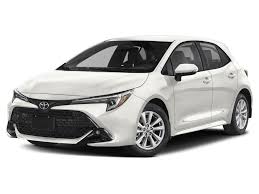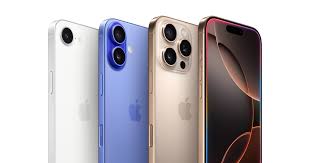Can you remember when you wanted to purchase a product from a company, such as a car, a laptop, or a mobile phone? You could choose from the several products they had in their product line.
How did it feel when Toyota or Apple didn’t just have a few products without variations, but a lot of them just waiting for you to make your choice? It felt great, right? That’s what a product line is for, and that’s why companies have them.
In this article, I’ll mainly address the meaning of a product line, how it works, common types, and examples of companies that use them in real time.
What is a Product Line?
A product line is a collection of products that a company sells under a particular brand or category. For example, a technology company can have a product line of smartphones of different models, specifications, and pricing.
These products form a product line and usually have things in common such as similar characteristics, target market, and functionalities. This makes it easy for a company to meet the preferences of their broad customer base while leveraging the same marketing and distribution channels.
This means they do not have to spend extra for each product individually, especially when they can all come under a single category.
How does Product Line work?
To understand how product line works, we’ll need to go through a couple of simple steps, which should do the trick:
Step 1: First, to understand how product lines work, companies try as much as they can to understand who their customers are—their target market.
They want to get every piece of information on them, including the product(s) they prefer, why they do it, and how to cover lapses that may cause them to lose customers. From gathering to analyzing customer data, companies make market research a priority, and this is something you should also do.
Step 2: In this next step, companies act on the information they’ve gathered and channel it into product development.
The range of products they develop should have a common theme or brand, even though they’ll have different features, specifications, and pricing.
Step 3: After product development, companies ensure that their target market does not get confused when identifying their products. So, they ensure every product within a product line has the same brand.
In branding, they’ll have the same logo, design, and story, which will help best position the products in the marketplace.
Step 4: Next, companies “unleash” their marketing strategies to let everyone know that they are there and have something great to offer.
This is where companies put their best foot forward by leveraging their unique selling points. The better their marketing strategies are, the more they’ll appear before the right eyes and cause a positive response to their products—straight and simple!
Step 5: In this fifth and last step, I’d like to summarize everything after the marketing efforts. These include distribution and sales, getting feedback on customer choices, and the life cycle management of products.
The other two are quite common, but I stress the importance of managing the product line’s life cycle. This means that at some point, some of the products in the product line will need to change, and some newer ones will need to be added. Hence, constant review and improvement must be made.
Read also: Sales strategy: Importance, types and how to develop one
Types of Product Lines
There are different types of product lines available for classifying your products, and this is to help you know which one will best help you achieve your goals. Let’s consider some of the common types of product lines:
1. Product Line by Quality or Price
Product line by quality or price is a company’s attempt to offer a range of products in the same category at varying qualities and price levels.
For a simpler explanation, take, for instance, a car manufacturer that offers varying qualities of cars, such as basic, mid-range, and luxury models, in a product line. These different models allow customers to choose based on their budget and what they are willing to spend on any of the models.
2. Product Line by their End Use
For this type of product line, companies classify their products based on their end use (what their application will be used for).
For instance, Johnny Group & Co. is a company that manufactures cleaning products. Because cleaning products have a wide range, the company will have product lines for household cleaning, industrial cleaning, etc.
Alongside offering different products that customers can choose from, they also help their customers find the right products easily under a specific product line.
3. Accessory Product Line
The accessory product line comprises products designed specifically to complement other products. They may not be very useful, except when used with other products.
This type of product line is best explained in the example of Mr. John, who owns a smartphone company but also has a phone accessory product line that offers phone casings, headphones, screen covers, and others.
By offering this accessory product line, Mr. John will reach a broader audience, meet various preferences, and establish his brand.
4. Product Line by Age and Gender
Companies often employ product lines by age and gender by categorizing their products into different age grades and genders.
For example, a company can create products for men, women, children, or a specific age group. This makes it easier for customers to choose from a wide range of products that also meet their very specific needs.
By having product lines that cater to different demographics, companies stand a better chance of reaching a wider audience and gaining patronage.
5. Product Line by Functionality
This involves grouping products in a product line based on their functionalities, features, and capabilities. Simply put, it means grouping products based on what they can do. It offers customers a variety of products in its product line from which to choose.
A typical example would be a company that manufactures fitness wearables designed to perform different functions, have different features and capabilities, and meet customers’ needs with different fitness goals.
Read also: Customer experience specialist: The complete guide
Examples of a Product Line
Several examples of product lines exist globally that are still helping businesses better meet the needs of their customers. Let’s consider two very well-known and prominent examples:
Toyota Corolla

Toyota Motor Corporation is a multinational Japanese automobile company headquartered in Toyota City, Aichi, Japan.
As a multinational company, Toyota has many vehicles categorized into different product lines. One of their product lines is the Corolla.
Toyota Corolla, one of the most famous and widely used brands globally, has different models. They include Corolla Sedan, Corolla Hybrid, Corolla Hatchback, etc.
What Toyota did with the Corolla product line was to offer cars with different features, sizes, and specifications that appeal to the preferences of their large customer base.
Apple iPhone

Apple is a giant in the gadget world and one of, if not the most sought-after products regarding their mobile phones, laptops, smartwatches, etc.
Due to their wide range of products, they have different product lines to help their customers, including the iPhone, better.
Their iPhones come in different models, such as the iPhone 14, iPhone 14 Pro, and iPhone 14 Pro Max. These iPhones have different specifications, like camera quality, features, and price.
Having a range of iPhones has helped Apple meet the needs and preferences of their customers. Thus, Apple is still very much in business, with a net income of $93.760 billion at the end of the 12-month period that ended in June 2024.
Product Line vs. Product Mix
It’s easy to get confused with product line and product mix. Are they similar? Do they do the same thing? Or are they different? These questions arise when businesses categorize products to help customers choose based on their needs and preferences.
As earlier stated, a product line refers to products that are grouped and sold by a company under a particular brand or category. They usually share similarities in their audience, market share, and so on.
While a product mix (or product portfolio) refers to all the products a company offers its customers. As the name implies, it’s a mix of all product lines in a company’s categories.
So, in a simple analogy, product lines are like the blocks that form the building called the product mix. While both of them deal with products, they are not the same!
Frequently Asked Questions
Can a single product be a part of multiple product lines?
Yes, a single product can fit into multiple product lines. Still, it has to meet the criteria and target audience that those other product lines meet. For instance, a versatile accessory product can fit in different product lines because it meets their criteria.
How does product line extension differ from product line filling?
Product line extension differs from product line filling in that it concerns itself with adding new models within an existing product line. In contrast, product line filling involves adding products to fill in product line gaps to meet customers’ needs.
Conclusion
Product lines have helped companies categorize products to meet customers’ needs and preferences. For customers, product lines give them multiple options when they want to make a purchase.
Customers know they could get a product model that suits their lifestyle, income, and needs—what a great experience that could bring to the customer!
Hence, product lines will remain helpful as long as the business landscape is concerned, and humans have needs that must be met.
